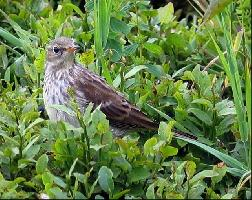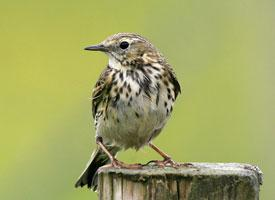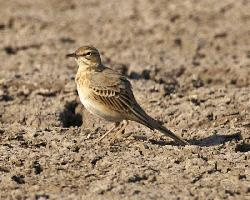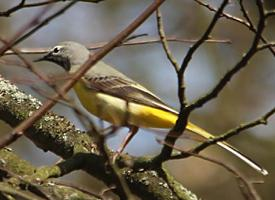
Popis zvířete
The Water Pipit, scientifically known as Anthus spinoletta, is a fascinating small passerine bird that belongs to the pipit genus Anthus within the family Motacillidae. This species exhibits a captivating blend of behavioral and morphological characteristics that make it a subject of interest among birdwatchers and ornithologists alike.Physical Description:
Water Pipits are slender birds, measuring about 15-17 cm in length, with a wingspan that ranges from 25 to 28 cm. They weigh approximately 20-25 grams. Their plumage undergoes a remarkable transformation between the breeding and non-breeding seasons. During the breeding season, they boast a distinctive appearance with a well-defined pale pinkish breast and belly, contrasted by a streaked darker back, and a face marked by a pale supercilium (eyebrow) and a dark malar stripe. The non-breeding plumage is more subdued, with the birds taking on a generally duller aspect, with less distinct markings.
Habitat and Distribution:
The Water Pipit has a wide range that extends across parts of Europe and Asia, with some populations migrating to North Africa and the Indian subcontinent during the winter. They are typically found in alpine meadows, wetlands, and along riverbanks at elevations ranging from the highlands down to sea level in their wintering grounds. Their preference for wet habitats, including marshes and flooded fields, distinguishes them from many other pipit species.
Behavior and Diet:
These birds are ground feeders, primarily consuming a diet of insects and other small invertebrates. During the breeding season, they may also feed on seeds and other plant matter. Water Pipits exhibit a distinctive foraging behavior, often seen walking or running rather than hopping, as they search for food among the vegetation and mud.
Breeding:
Water Pipits are monogamous and typically breed once a year. Their nests are artfully concealed on the ground, often among rocks or vegetation, where they lay a clutch of 4-6 eggs. Both parents share in the duties of incubation and feeding the young. The chicks are altricial, born blind and featherless, and depend on their parents for warmth and food.
Conservation Status:
Currently, the Water Pipit is classified as Least Concern by the International Union for Conservation of Nature (IUCN), indicating that it does not face an immediate threat of extinction in the wild. However, like many bird species, it is potentially vulnerable to habitat destruction and climate change, which could impact its breeding and wintering grounds.
In conclusion, the Water Pipit is a remarkable bird with distinctive habits and adaptations that allow it to thrive in its unique wetland habitats. Its presence across a broad geographic range, coupled with its adaptive behaviors, makes it a compelling subject for further study and conservation efforts to ensure its continued survival in the face of changing environmental conditions.
Podobná zvířata
Nové fotografie zvířat
Top 10 zvířat
- Chinese water dragon (Physignathus cocincinus)
- Galápagos tortoise (Geochelone nigra complex)
- Dolphin gull (Leucophaeus scoresbii)
- Japanese macaque (Macaca fuscata)
- Colombian red howler (Alouatta seniculus)
- Sea urchins (Echinoidea)
- Moustached guenon (Cercopithecus cephus)
- Diana monkey (Cercopithecus diana)
- Common reed warbler (Acrocephalus scirpaceus)
- Common house mosquito (Culex pipiens)


